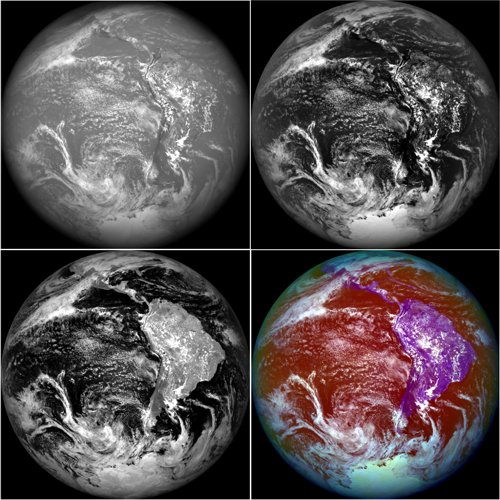- 1Department of Physics, University of Helsinki, Finland (antti.i.penttila@helsinki.fi)
- 2VTT Technical Research Centre of Finland
- 3Finnish Geospatial Research Institute FGI, National Land Survey, Finland
We are compiling a service, which will produce almost real-time estimates of the Earth Bond albedo in visual and near-infrared wavelengths using the multi-wavelength images from the NOAA Deep Space Climate Observatory’s (DSCOVR) Earth Polychromatic Imaging Camera (EPIC). The service will be based on the known land and sea surface types of the Earth and the angular distribution models (ADMs) from the Clouds and the Earth’s Radiant Energy System (CERES) project (some details in Ihalainen, M.Sc. thesis, 2019, University of Helsinki, Finland). Instead of applying the CERES ADM albedo estimates as such, we will only use the ADM shapes for different land and sea surface types, but scale them using the corresponding observations from the EPIC camera.
As the EPIC camera will produce imaging of the Earth disk from the L1 point, in about every two hours and in 10 narrow band filters between 317–780 nm, we can follow the temporal changes in the Bond albedo both in short times scales and over longer periods. We will employ a custom-made classifier for cloud coverage over the Earth disk using the 10 bands in the EPIC images to improve the Bond albedo estimation with temporally suitable cloud coverage ADMs over the land or sea surface pixels.
The service will be run automatically in a dedicated server, and will produce the Bond albedo estimates via a public web interface.

Figure 1. An example image from EPIC camera, taken at Jan. 1st, 2019. The three first images, counting from the top left corner, are gray-scale images at wavelength bands 317 nm, 388 nm, and 780 nm. The fourth image is false-color RGB composite from those channels.
Acknowledgements: Research supported by the Academy of Finland (project 298137).
How to cite: Penttilä, A., Uvarova, E., Vuori, M., Ihalainen, O., and Muinonen, K.: Earth Bond albedo retrieval, Europlanet Science Congress 2020, online, 21 Sep–9 Oct 2020, EPSC2020-749, https://doi.org/10.5194/epsc2020-749, 2020.

